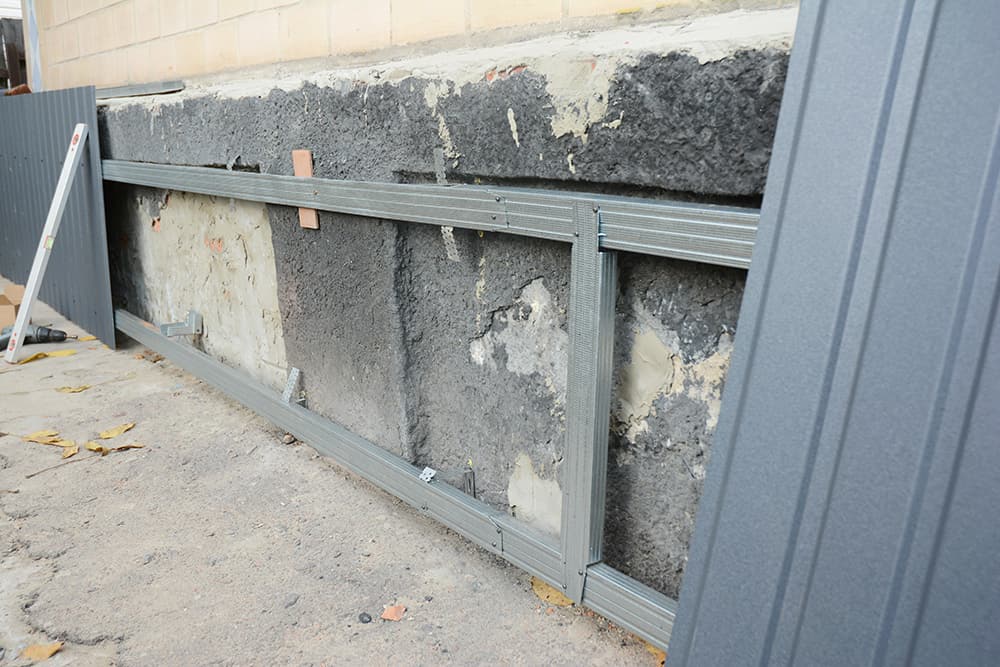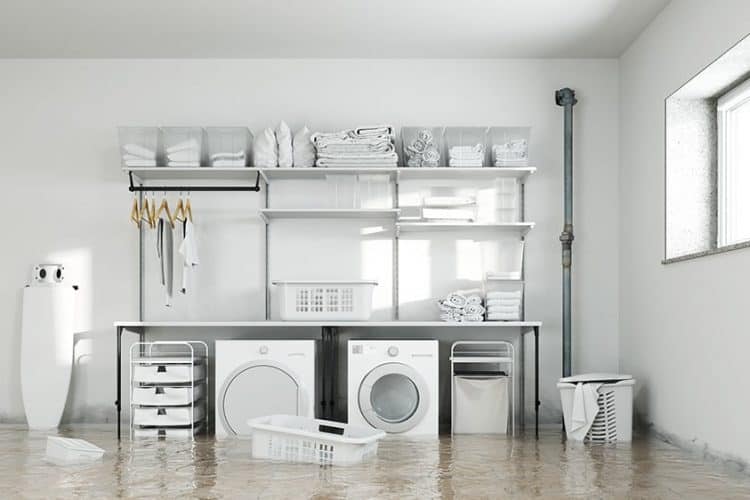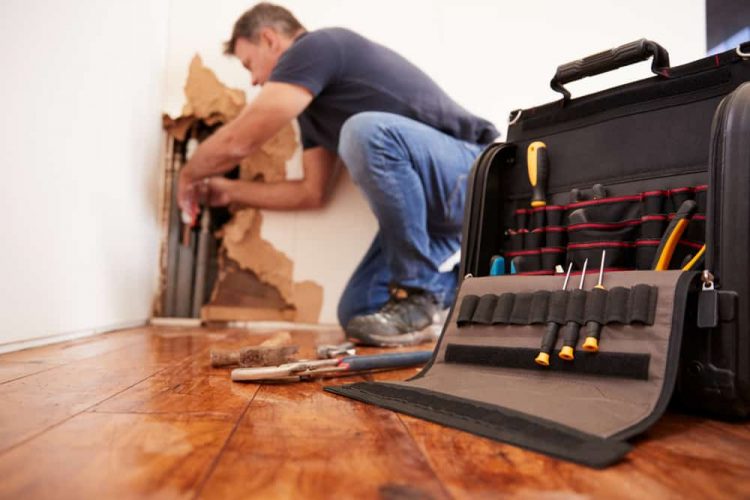
When you experience a water damage situation, knowing how to dry walls is important to restoring the health and safety of your property. Walls are built from natural materials which are impacted by water and can weaken structures over time. If not properly addressed, wet walls can result in mold and bacterial growth.
When tackling a situation of wet walls on your own, here is a step-by-step guide on how to remove moisture from walls, or to help you determine if you need a professional service.
How to dry walls: 8 important steps
- When you recognize you have a water problem impacting your walls, determine the source of the damage. If the damage has an indoor cause (ie: pipe leak), turn off the water and repair the issue. If the damage has an outdoor cause (ie: property slope or lack of gutters), remove as much water as you can from the impacted area and find a solution to prevent future water damage. This could mean adding gutters, increasing the slope away from the foundation, etc.
- After addressing the source, remove all items from the wall so you have direct access. This includes paintings, wallpaper, cabinetry, etc. If cabinets cannot be removed, empty their contents and open the doors.
- Remove molding and baseboards that are in the immediately impacted area to prevent moisture from collecting behind them.
- Remove carpet, rugs and associated padding in the affected area and dry these items separately. Removing floor coverings will prevent more damage to the flooring and ward against mold growth.
- For significant damage, you may need to drain any standing water located in the wall. Drill a small hole into the wall (between the studs) approximately two inches above the floor. If water comes out, drill a few more lateral holes six inches apart to help the water drain quickly.
- Remove severely damaged areas of the wall as a preventative measure. If drywall is crumbling or sagging, remove it. Any damp insulation should also be removed. This gives you a good look at the wood braces to see if you have any water damage there as well. Wood cannot dry when it is covered by other wet material and mold can grow quickly.
- Now we are in the heart of how to dry walls. If you have a humidifier, move to Step #8. If you don’t have a humidifier, open doors and windows to help with the drying process.
- Use fans and a dehumidifier (if you have one). Fans will move the air around the damp area to help dry it. A dehumidifier will help remove moisture from the air and walls.
Two final notes
For hard-to-reach areas like closets, use desiccants (drying agents) to help. These products are gels or other soluble agents that can absorb moisture and are available at your local hardware store or grocery store.
You can double-check the moisture of your walls using a moisture meter. If you have done these steps and still have damp walls, you should call a professional service.
A note about condensation in basement concrete walls
Many homes with basements have concrete walls, which come with a different kind of moisture issue.
The National Concrete Masonry Association notes that moisture control in basements starts with preventing moisture from getting into the basement. This includes grading away from your home and installing gutters and downspouts and keeping them free from debris. For many homeowners, condensation in concrete walls is an issue. When warm air comes into contact with a cold surface, the moisture in the warm air vapor condenses and can show up on your concrete walls.
Beyond the outside solutions to redirect water, if you have condensation in your concrete basement walls, you can keep air circulating with a dehumidifier or fans to help eliminate the condensation. You may also need to fix cracks in the foundation, insulate your basement or consider interior drainage if the problem is recurring. 1-800 WATER DAMAGE professionals can talk with you about this and recommend if your situation is to the point where you would benefit from contacting a masonry professional.
Contact 1-800 WATER DAMAGE to be sure of dry walls
In learning how to dry walls that are impacted by water, there are many things a property owner can do to address the situation. Sometimes, however, the damage is too extensive or there is an issue with being able to spend the appropriate time to properly treat the situation. This is where 1-800-WATER DAMAGE can help.
Water damage to walls is nothing to take lightly. If not handled properly, problems will persist and you may eventually face a more serious issue. If you know you need professional help, or even if you are unsure, give us a call.



